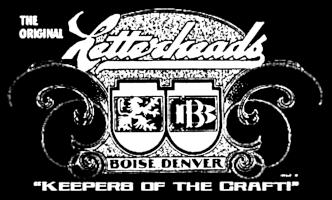Im still going strong, my one man operation of learning and working simultaneously is slowly growing and i have my third reverse glass lettering job lined up for next week, yay
I was hoping that maybe someone might have some input or experience in doing reversed glass jobs on sealed double and triple glazed windows, im not sure i've found the correct english term, but i mean those windows that have several sheets of glass in a single frame for energy saving purposes.
I have a client who asked me to do their studio logo (white, lapis lazuli blue and antique red so its pretty somber) and they have the aforementioned type of frame and its not possible to access the outermost sheet.
I was wondering wether i should brighten my colours a little to compensate for the extra layers of reflective surface in front of the paint, im pretty sure it will come out with slightly less "oumpf" if i dont, not drawing the eye quite as well.
Any thoughts are welcome!
 Denver Chapter of the Letterheads
Denver Chapter of the Letterheads